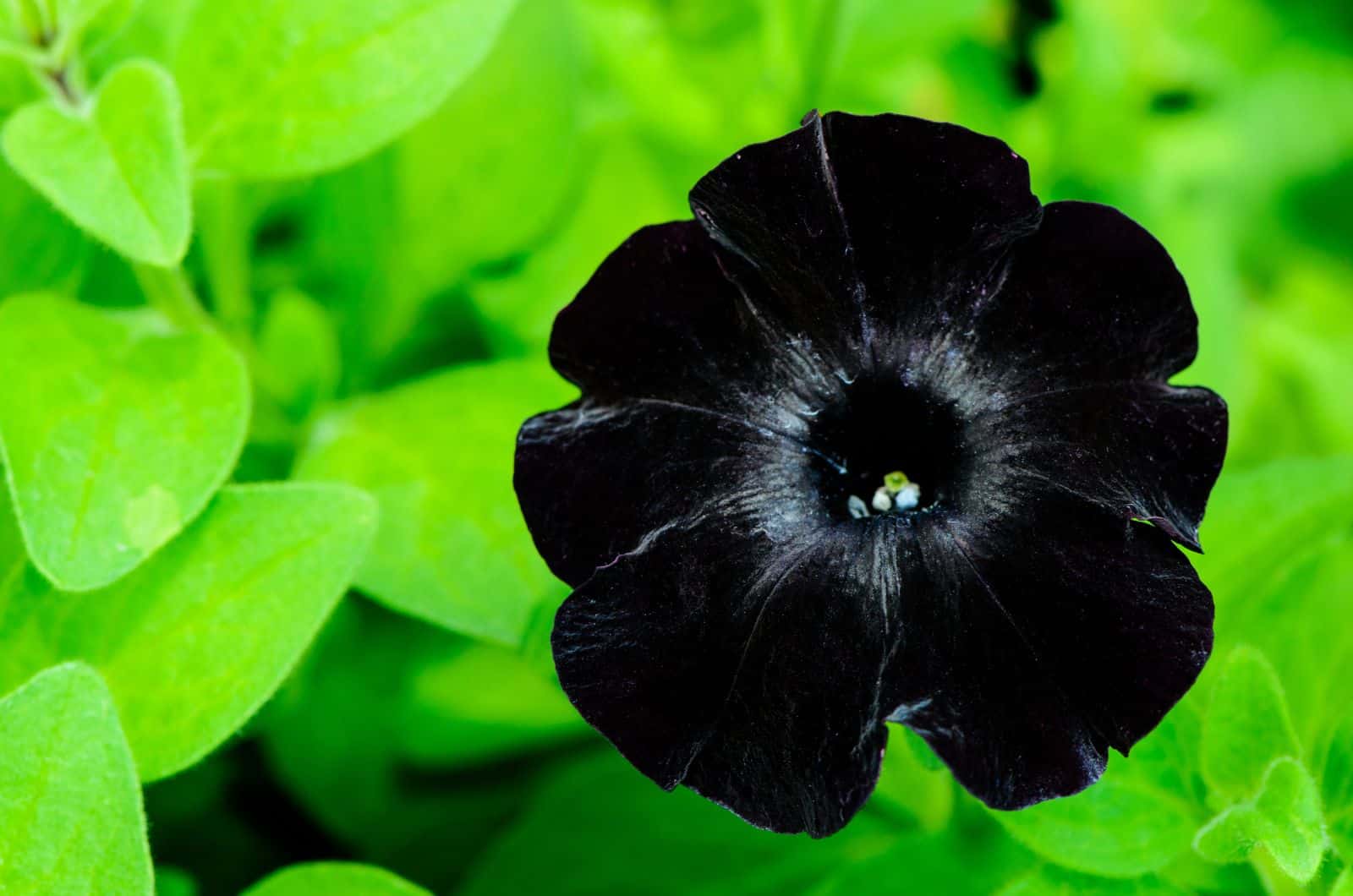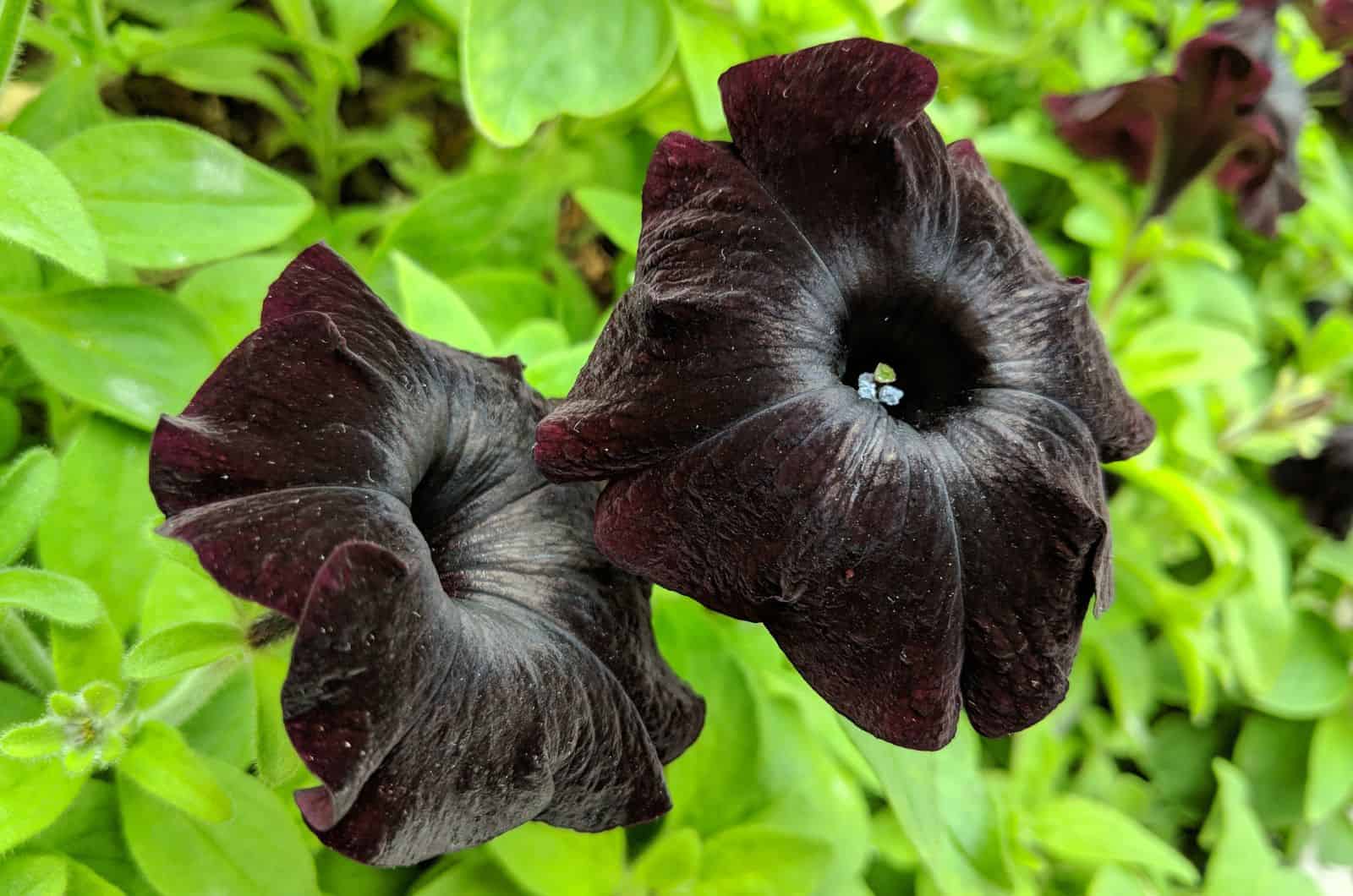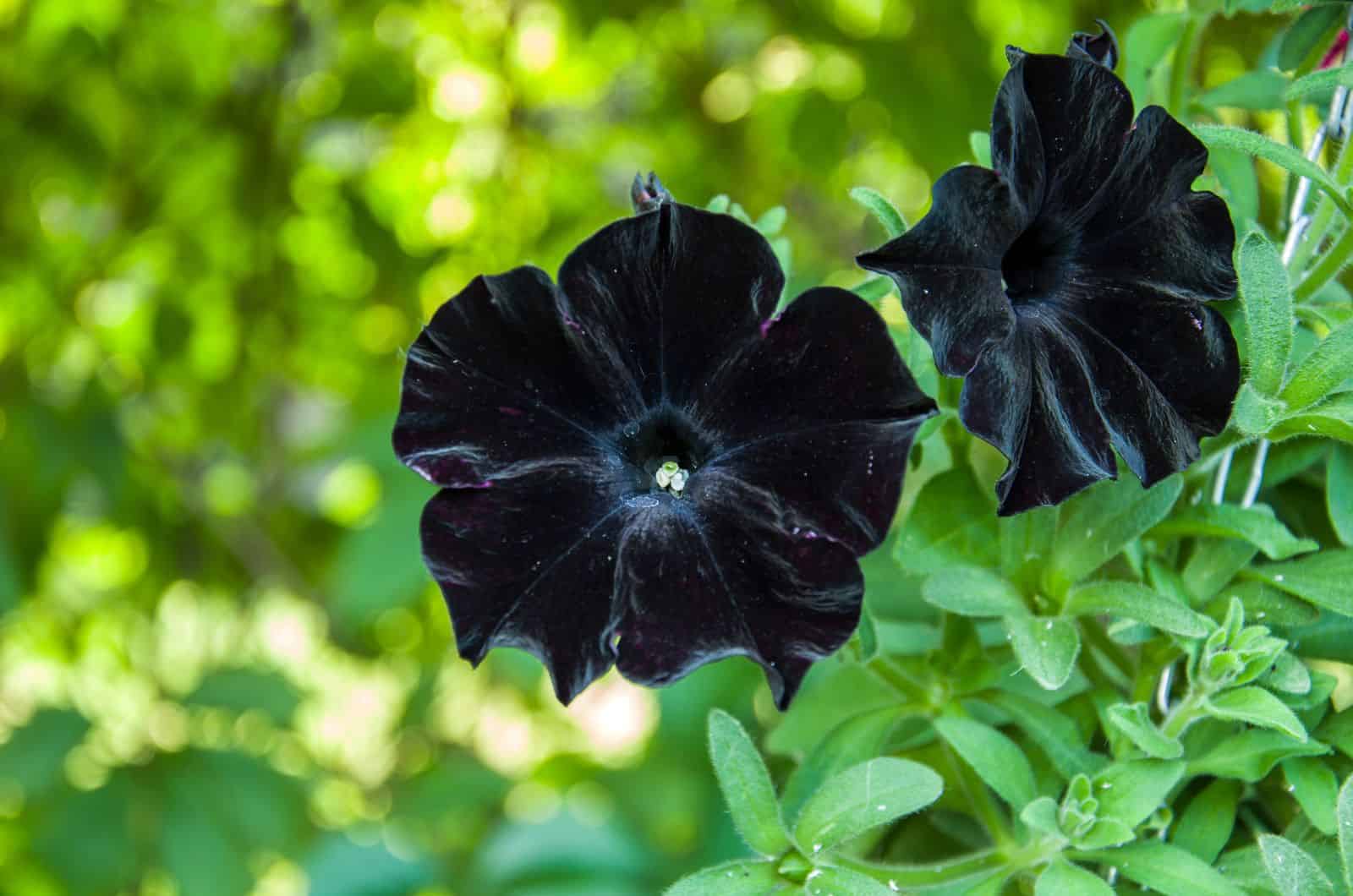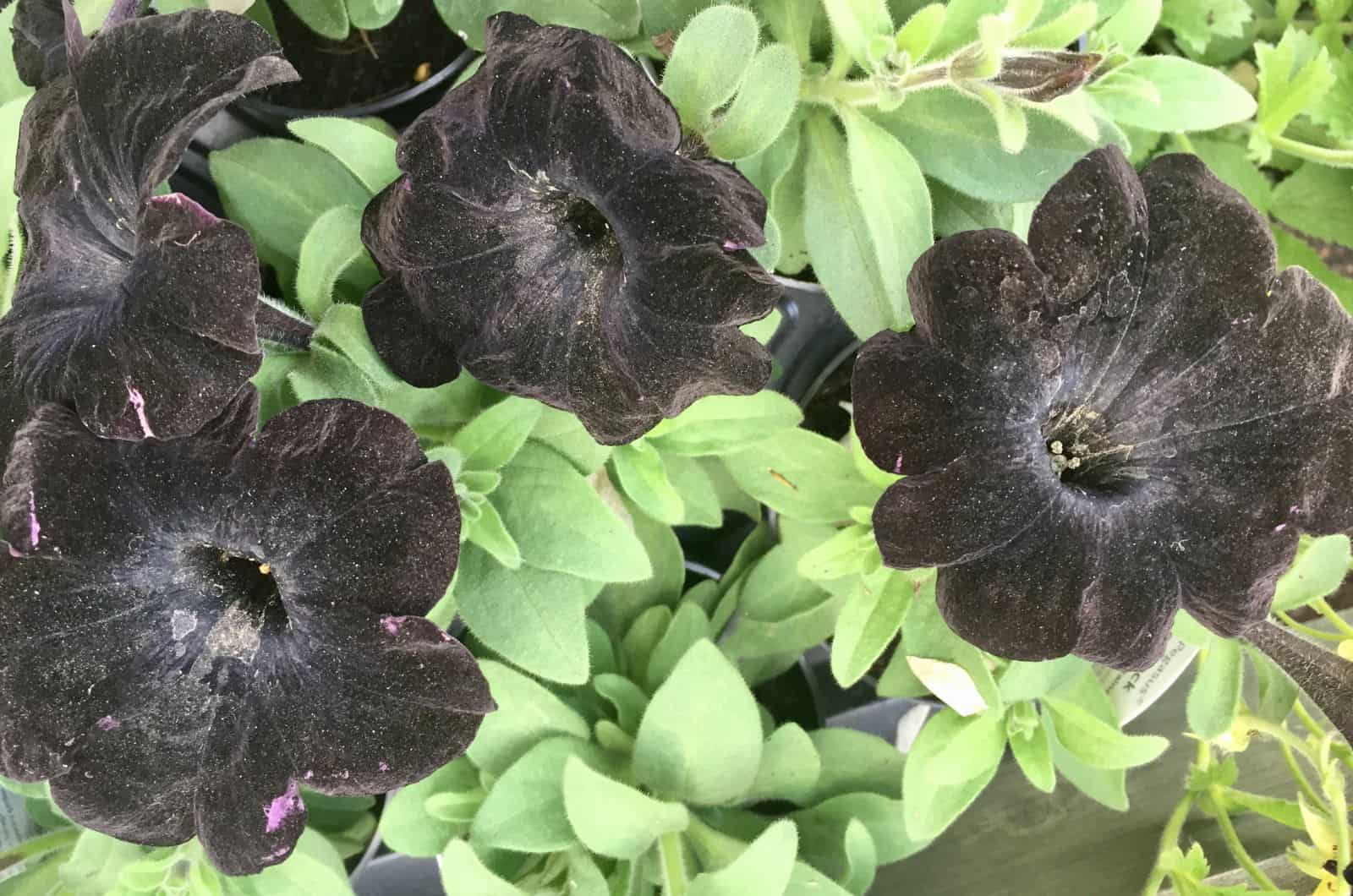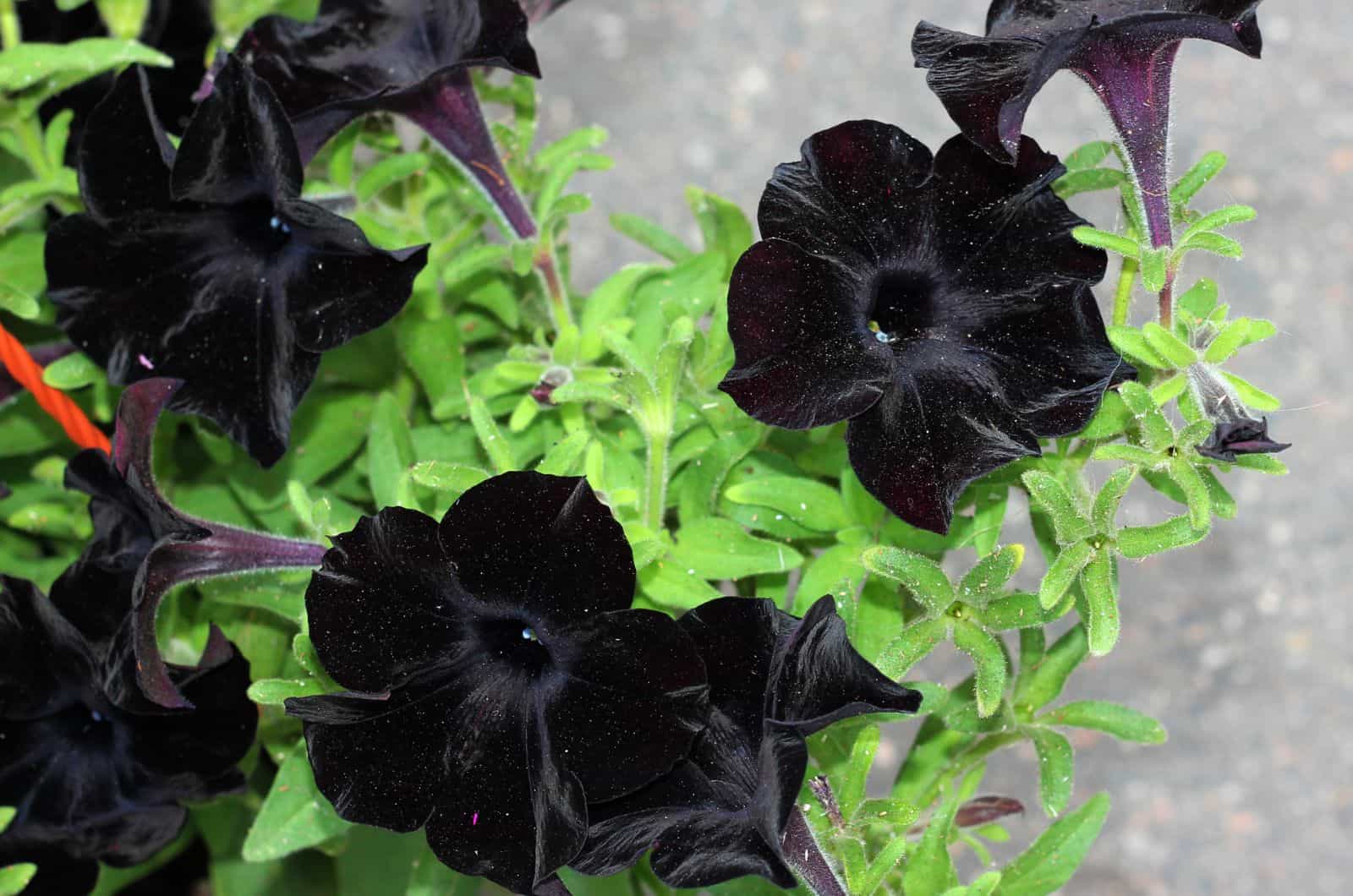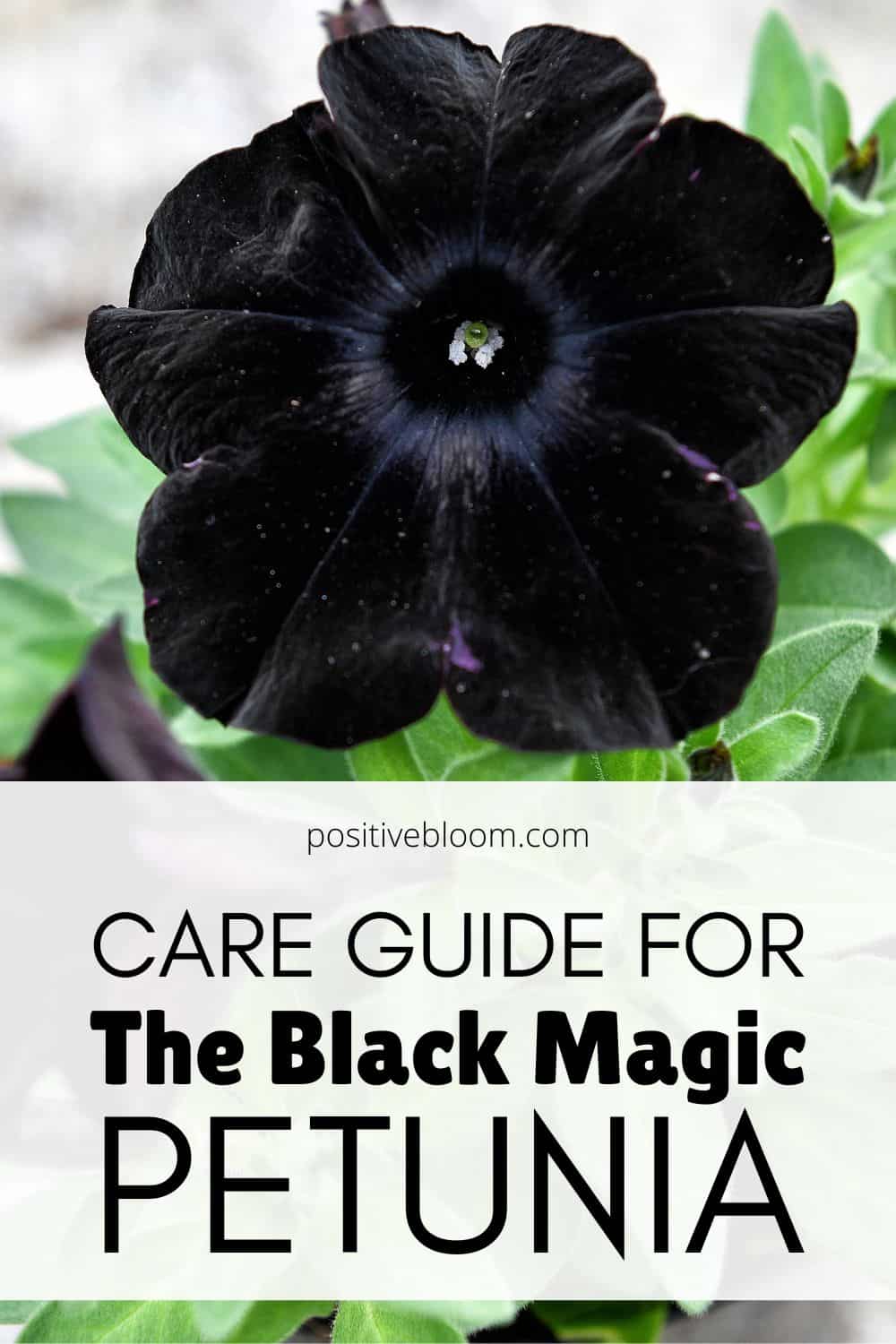Growing black flowers will single out your indoor or outdoor garden, but it can be hard to choose the perfect black plant! It could be roses, orchids, or perhaps petunias.
Well, all those plants are unique and beautiful, but today we’ll talk about the last one!
The Black magic petunia has a couple of other common names, and it’s also known as black velvet petunia, black petunia, black mamba petunia, and crazytunia.
It is a plant with so much to offer, and it doesn’t demand too much care. We’ll discuss its basic requirements, provide tips for dealing with its common issues, and more.
Before we get to all that, let’s learn the general specifics of this plant:
[table id=458 /]
Black Magic Petunia Care Guide
The black flowers of this petunia variety make it a desired cultivar among flower lovers. But how do you keep the flowers black and the plant healthy?
It’s simple; tend to its basic needs from below, and your plant will thrive!
Light Requirements
The black petunia plant thrives in full sun, so you should expose this plant to about six hours of direct sunlight each day.
However, too much light can quickly lead to sunburn, so ensure your plant gets some indirect light during the hottest times of the day.
If you decide to grow this plant indoors, you can place it near an east-facing window where it’ll get direct sunlight in the morning and bright light in the afternoon.
Of course, growers that don’t have access to indirect sunlight can always use grow lights!
Water Requirements
The first thing you need to do is choose the best water for your plants. For instance, tap water contains too much chlorine and can disrupt the absorption of the moisture and minerals your plants need to survive.
Rainwater is good for plants and doesn’t cost anything, so you can use it to hydrate them. But if you don’t live in a region with enough rain, you can always use distilled water instead.
Also, you should always wait until the topsoil begins to dry before irrigating your black petunias, or you risk overwatering and root rot.
As this plant has shallow roots, you should water it slowly and wait until the excess moisture starts draining out through the drainage holes.
Humidity And Temperature
The good news is that you don’t have to take extra steps to increase air moisture because the black petunia plant thrives in lower humidity levels.
This variety is hardy down to 40°F, but it generally prefers warmer temperatures, so you should always try to keep it in temperatures between 65-75°F.
Soil And Fertilizer
Petunias need well-draining, loose, and slightly acidic substrate. Native soil is not the best choice as it can be too heavy and compact, so the petunias’ roots won’t be able to spread. But you can always amend it with organic materials, such as homemade compost.
For potted plants, choose a good-quality potting mix that is loose, fertile, and well-draining.
If you want to show off your black petunias in new hanging baskets, you can make your own mix that isn’t as heavy as the store-bought blend. Simply mix equal amounts of sand, peat moss, and shredded bark, and you’re done!
Fertilizer
It doesn’t really matter whether you use slow-release or liquid fertilizer for your petunias, as long as you use petunia feed or a variety with a balanced ratio of macronutrients (for instance, triple 8 or triple 10).
However, slow-release fertilizers are usually used for outdoor plants, whereas liquid ones are generally applied to houseplants.
You can apply a slow-release fertilizer twice a year (in early spring and early summer) and a diluted liquid fertilizer twice a month.
Propagation
There are two ways of propagating the black petunia plant, either from seeds or stem cuttings.
You can follow the simple steps below to introduce more jet-black flowers to your garden:
Propagating Petunia From Seeds
Step 1. Harvest the seeds by tying a plastic wrap or a plastic bag around the flower head in seed. Once it dries out, cut the head and shake it inside the plastic bag or wrap to collect the seeds.
Step 2. Fill a seed starter tray with compost.
Step 3. Scatter a couple of seeds inside each cell. Don’t cover the seeds with the growing medium because they need light to germinate.
Step 4. Water the seeds thoroughly. Keep the substrate moist! Expose the seeds to light and keep them in warm temperatures.
Step 5. In about 5-10 days, the seeds should germinate. Wait until the seedlings become larger, and then repot them into a bigger nursery tray.
Here are some more useful tips for growing petunia plants from seeds:
Propagating Petunia From Stem Cuttings
Propagating petunias from stem cuttings is better because you can make sure it’ll keep its true black color.
Step 1. Choose a healthy stem with a couple of leaves and no flowers that’s 3-5 inches long. Use sterilized pruners or a knife to cut it.
Step 2. Dip the cutting into a rooting hormone, and plant it into a growing pot filled with a moist mixture of peat moss and perlite.
Step 3. Place the container in bright light and cover it with a plastic wrap or bag to maintain higher humidity levels.
Step 4. Keep the growing medium moist by spraying it with water.
Step 5. You can leave the cutting in the same pot after the roots develop, but then transplant it to a bigger planter as it grows.
Pro tip: You can check whether the cutting has rooted by trying to pull it out of the pot. If the plant offers some resistance, it indicates the root system has formed.
Common Issues
Unfortunately, petunias can get infected with root rot if you’re not careful about watering. When your plant is infected with this disease, you must remove mushy, rotting roots, spray the rest with fungicide, and plant the petunia in fresh soil.
This plant can also have issues with pests such as aphids, spider mites, etc., and if you don’t use chemical pesticides, you can always attract ladybugs or use orange peels for plants because they can deter aphids.
More About The Black Magic Petunia
Black petunia flowers last all summer until the first frost kills them, and you can enjoy their blooming season for a long time.
Their trumpet-shaped flowers are deep black, and you can pair them with other petunia varieties that have yellow striping.
Petunias also belong to the list of plants with shallow roots, so you can easily grow them in pots. As they have a trailing habit, they will look amazing in hanging baskets.
Final Thoughts
This article discussed everything you need to know about black magic petunia care, from its basic requirements to propagation.
We briefly mentioned some common issues that may befall this plant and also offered some tips for dealing with them.
Of course, knowing some general facts about flowers is always helpful, so we included some more info about the black magic petunia.
Enjoy your unique garden, and until next time!
Like this post? Share or pin it for later!

